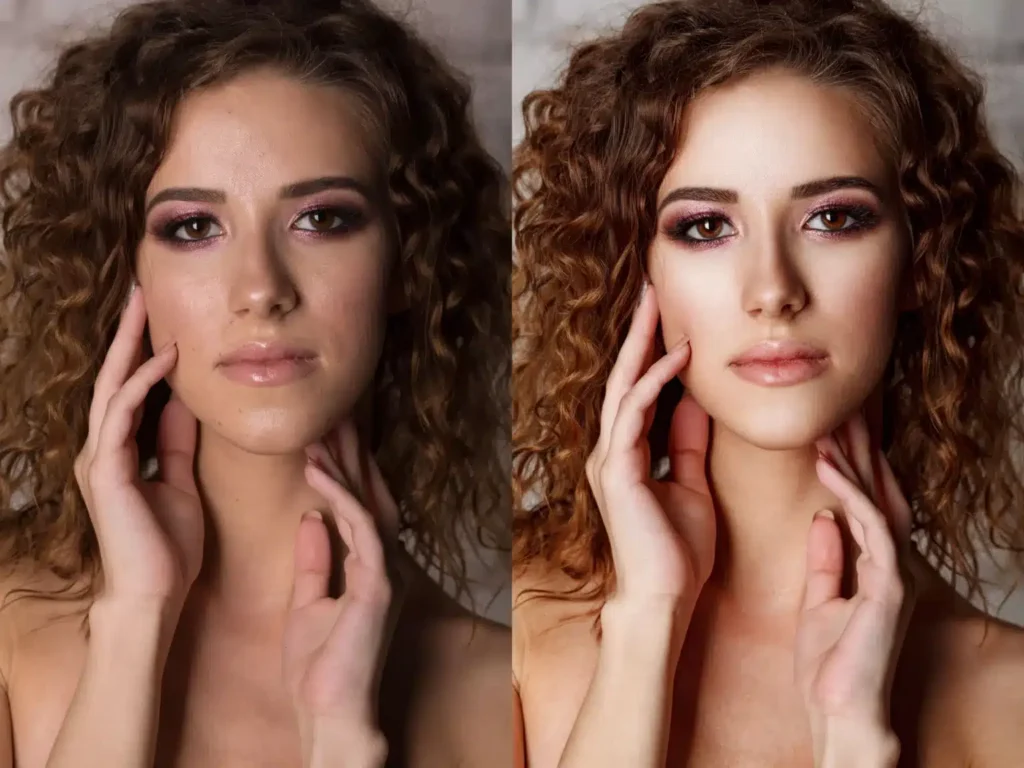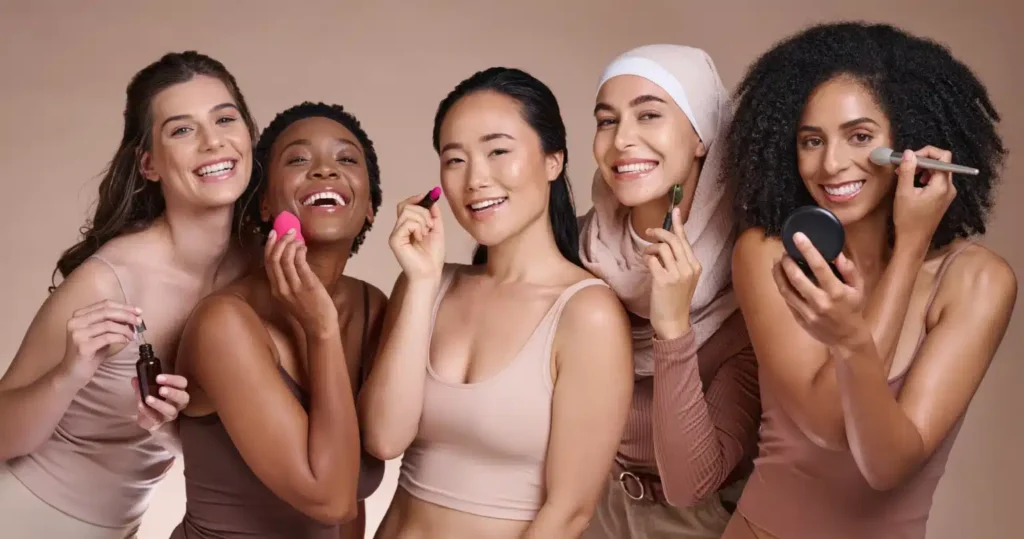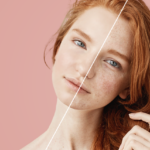In the era of digital innovation, augmented reality (AR) and artificial intelligence (AI) have revolutionized the way we interact with the world around us, particularly in the beauty industry.
AR face filters and beauty filters have become omnipresent, offering users the ability to transform their appearance with a simple swipe.
However, the line between filter vs. reality has become increasingly blurred, raising ethical concerns about transparency, consent, and the impact on self-image.
So, in this day and age, it’s more important than ever to navigate these challenges properly and delicately, offering solutions that prioritize ethics and transparency.
This article delves into the essential considerations for beauty and color cosmetic brands utilizing AR face filters, ensuring that innovation goes hand-in-hand with integrity.
Filter vs. reality: The impact of beauty filters and the ethical imperative in AR beauty tech
The conversation around “filter vs. reality” delves deep into the complex relationship between digital enhancements and our perception of beauty. We can even say that augmented reality has the power to alter perceptions and influence self-esteem.
And, with over 200 million daily users engaging with Snapchat’s AR filters alone, the reach and impact of these technologies are undeniable. These AR and AI face filters, capable of transforming one’s appearance in real time, have become integral to how individuals present themselves online, influencing not only personal identity but also social dynamics.
This digital transformation, while offering new avenues for creativity and expression, also raises significant concerns regarding mental health and self-esteem. Research highlights a troubling link between the prolonged use of beauty filters and a range of psychological issues.

Studies have shown that AR and AI face filters can lead to anxiety, body dysmorphia, and an increased desire for cosmetic surgery, underscoring the need for ethical guidelines. And this rings especially true for young and impressionable audiences.
➥ The implications of beauty filters
The implications of these findings are far-reaching, prompting a critical examination of the ethical responsibilities held by developers, platforms, and brands in the AR space. As these technologies become more advanced and integrated into our daily routines, the need for ethical guidelines becomes increasingly urgent.

Such guidelines must address the transparency of digital alterations, ensuring users are aware of when an image has been modified. They should also promote diversity and inclusion, offering a broader representation of beauty that reflects the real world more accurately.
Moreover, there’s a growing demand for educational initiatives aimed at fostering digital literacy, helping users navigate the complexities of AR-enhanced content with a critical eye. By understanding the mechanics behind AR filters and recognizing their impact, individuals can better navigate the fine line between digital enhancements and real-life expectations.
We can see that the discourse on “filter vs. reality” touches upon fundamental questions about authenticity, self-acceptance, and the ethical use of technology. So, as we move forward, it’s imperative for all stakeholders in the AR ecosystem to engage in this conversation, championing practices that support well-being, diversity, and realism in the digital age.
Let’s see a few examples of how and why it should be done.
Implementing rigorous internal approvals
A standout example of proactive ethical oversight comes from Facebook’s approach to filter management. Each filter undergoes an internal review process to identify potential issues, such as hate speech or nudity.
Expanding these checks to scrutinize filters for promoting unrealistic beauty standards represents a critical step in safeguarding users against harmful content. This practice not only enhances user experience by prioritizing safety and respect but also sets a benchmark for transparency in digital content creation.
✧ Key takeaway
Brands and platforms offering AR filters should adopt comprehensive review processes that assess filters for content that could perpetuate harmful beauty ideals. By doing so, companies can lead by example, fostering a safer and more inclusive digital environment.
Embracing regulatory frameworks
The role of regulation in mitigating risks associated with AR technologies cannot be overstated. Norway’s legislation requiring influencers to disclose when their content has been digitally altered is a pioneering move towards greater transparency in social media.
This law acknowledges the profound impact of AR on perceptions of beauty and seeks to counteract the potential for misinformation.

✧ Key takeaway
Policymakers and industry leaders must collaborate to establish regulations that encourage honesty and integrity in the use of AR. Such laws not only protect consumers but also guide brands in adopting more responsible advertising practices.
Offering customization options
Customization lies at the heart of ethical AR use, allowing users to engage with technology on their terms. By providing a range of adjustment options, brands empower users to decide the extent of digital enhancement, fostering a sense of autonomy and self-expression.
This approach is integral to Arbelle’s solutions, which prioritize user choice and diversity, ensuring that AR experiences enrich rather than detract from the richness of individual identities.
Arbelle also stands out by not employing beautification techniques by default, such as image distortion or blurring. We deliver the face as captured from the camera, without adjusting proportions to conform to beauty standards.
Our commitment is to offer a virtual try-on experience that reflects the ‘real you’, allowing beauty products to enhance users’ appearance as they would in reality. This commitment aligns with our dedication to providing an experience that is as close to reality as possible, ensuring that users can see the true impact of beauty products without the influence of unrealistic standards.
✧ Key takeaway
Incorporating customization options into AR solutions enables users to explore beauty enhancements without feeling pressured to conform to rigid or unrealistic standards. Brands that champion user customization not only enhance user satisfaction but also contribute to a more positive digital culture.
Adhering to advertising standards
The Advertising Standards Authority’s (ASA) 2021 ruling underscores the importance of honesty in marketing communications. Filters, while permissible in advertising, must not mislead consumers about the effectiveness of products.
This guidance encourages brands and influencers to use AR technology thoughtfully, ensuring that promotional content accurately represents the products being marketed.
✧ Key takeaway
Transparency in advertising is crucial. When employing AR filters in marketing, brands should clearly communicate the role of digital enhancements, avoiding claims that could mislead consumers about product performance. This commitment to truthfulness reinforces consumer trust and upholds the integrity of digital marketing practices.
Championing diversity and inclusion
A pivotal aspect of ethical AR usage lies in its capacity to embrace and accurately reflect the diversity of human beauty. AR face filters, when designed with diversity and inclusion at their core, can challenge and expand conventional beauty standards rather than reinforcing narrow, unrealistic ideals.
This means creating filters that accurately represent a wide range of skin tones, facial features, and aesthetics, ensuring that every user sees themselves reflected in the technology they interact with.

- Key takeaway: For AR technology to truly serve and uplift its users, it must be developed with an unwavering commitment to diversity and inclusion. By offering a rich palette of customization options that celebrate the full spectrum of human beauty, brands not only foster a more inclusive digital environment but also empower users to express their unique identities confidently. This approach not only challenges outdated beauty norms but also paves the way for a more accepting and diverse representation of beauty in digital spaces.

➥ Learn more about the world’s first inclusive foundation shade finder we developed at Arbelle.
Innovate responsibly with Arbelle
The intersection of AR technology and the beauty industry offers unprecedented opportunities for innovation and engagement. However, the imperative to use these tools ethically and transparently cannot be overstated.
The journey toward ethical AR usage in the beauty industry is multifaceted. It involves a blend of internal governance, regulatory compliance, user-centered design, and transparent advertising.
At Arbelle, our mission is to lead by example, demonstrating that it is possible to offer cutting-edge AR beauty solutions while upholding the highest standards of ethics, transparency, and respect for diversity.
By prioritizing consent, privacy, and the promotion of realistic beauty standards, we can ensure that AR technology enhances the beauty experience without compromising individual well-being or self-perception.
Together, let’s embrace the future of beauty tech with integrity, ensuring that AR face filters enhance, rather than distort, our perception of beauty. Reach out to us today to find out more about our solutions.
Try our cutting-edge AR beauty solutions
Dive into beauty tech solutions with Arbelle transparently and ethically, fostering safe and inclusive digital beauty spaces.



